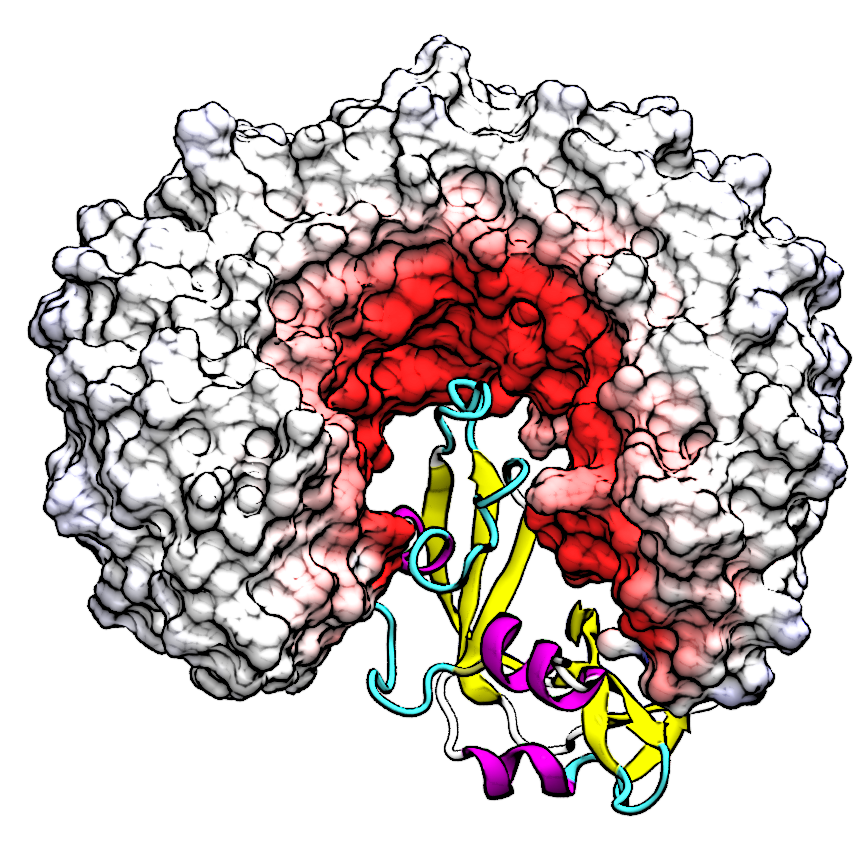Quantum Biophysics

Biological systems present special challenges for the application of quantum chemical models. In order to extend quantum methods to treat very large systems, methods must be formulated to be highly efficient and scale linearly with system size. Recently, we have developed a new theoretical framework for the creation of new quantum mechanical force fields that are able to be applied in long-time simulations, while at the same time have a balanced treatment of both intramolecular bonding and intermolecular non-bonded interactions, making them highly accurate and tunable. In addition, we develop and apply high-level electronic structure methods (including density-functional theory) that can be used alone, or within our multiscale modeling framework, in order to study chemical reactions. In addition to our lab's focus on RNA catalysis, we study a wide range of other enzymatic and non-enzymatic phosphoryl transfer reactions in solution. Areas of Quantum Biophysics concentration include the development/applications of:
- Linear-scaling quantum force fields for biocatalysis simulations
- Electronic structure methods for biocatalysis
- Enzymatic and non-enzymatic phosphoryl transfer reactions
Linear-Scaling Quantum Force Fields for Biocatalysis Simulations
Our lab has pioneered some of the world's most powerful "linear-scaling" electronic structure methods - quantum methods that scale linearly in system size that can be applied to a wide range of large-scale biological problems. Very recently, we have made breakthroughs in the creation of a new theoretical framework from which to build fully quantum mechanical "force fields" for biomolecular simulations that provide a mechanism to balance strong intramolecular bonding terms (important for modeling chemical reactions) and relatively weak intermolecular non-bonding terms critical for selectivity of ligand binding, molecular recognition, and tertiary structure. The new framework was evolved from the culmination of many innovations and technological advances driven by our lab that provide the infrastructure needed to create this new class of quantum force fields.
Electronic Structure Methods for Biocatalysis
We develop and apply high-level electronic structure theory methods, including density-functional methods, to apply to problems of biological reactivity, often using our linear-scaling quantum force field with our multiscale modeling framework. One of the most useful class of methods are those based on density-functional theory, which includes the effects of electron correlation needed for accurate bonding and electronic properties, while at the same time is sufficiently computationally efficient to be applied to small biological systems without the use of linear-scaling methods. Higher-level explicitly correlated methods, such as those derived from coupled cluster theory, are extremely expensive and not readily amenable to application to large-scale systems, but are often used on relatively small model systems to create benchmark reference data from which, along with experiments, other methods are developed and compared.
Enzymatic and Non-Enzymatic Phosphoryl Transfer Reactions
Catalysis is defined as the enhancement of a reaction rate relative to the background rate that would occur in the absence of the catalyst. For protein and RNA enzymes that catalyze phosphoryl transfer reactions, that means the background rate that occurs in aqueous solution, under a specific set of conditions such as temperature, pH and ionic strength. hence, a detailed understanding of any enzymatic phosphoryl transfer process requires also a knowledge of the non-enzymatic reaction that occurs in solution. By studying phosphoryl transfer reactions of a wide array of model systems, and placing this knowledge within the context of experiments (i.e., providing a molecular-level interpretation of experiments that probe mechanism), we can build of our understanding of these reaction and the factors to control reactivity. Toward this end, we interact strongly with a network of experimental collaborators in order to provide a unified interpretation of a wide range of experiments and a consensus view of mechanism.